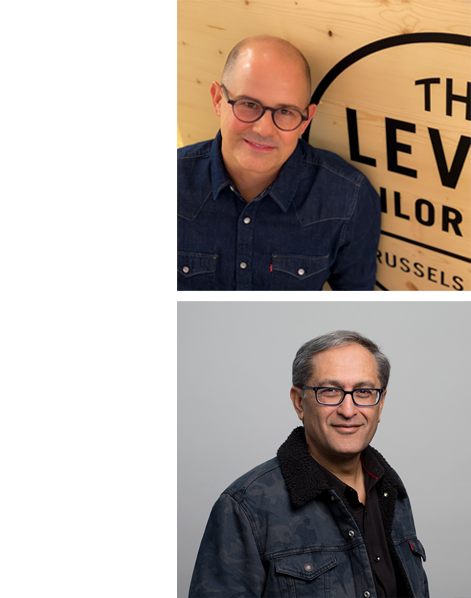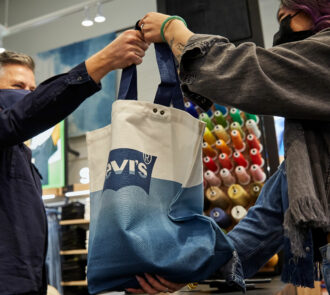Our Chief Sustainability Officer, Jeffrey Hogue, and our Executive Vice President and Chief Financial Officer, Harmit Singh, share their thoughts on this year’s report.
JH: I hope they get a sense of the rigor and ambition that went into both this report and the new goals we’ve set for the company. I hope they see ongoing progress across our programs and the heightened ambitions that we think necessary to meet the moment. I hope they see how we continue to employ a broad, holistic definition of sustainability and that we see how the interconnectedness of the issues we’re working on. And I hope they see that the climate, consumption and community framework remains the right one for this company and this moment.
HS: There is a great deal happening in this space, in the United States, in the European Union, and elsewhere. Some of it was already there, specifically the greater scrutiny we’re seeing from NGOs and investors alike. Then there are conversations about regulations, with the Securities and Exchange Commission in the U.S., for instance. A degree of standardization has long been necessary, and as we track the various conversations, we will continue to hold ourselves to the same high standards of accountability for our claims, plans and progress. It’s a very active time on this front, no question about that. But as the picture comes into focus, it should benefit all stakeholders and put everyone on an even playing field when reporting progress and setting goals.
JH: I think we talked about this last year, but the transition to a circular economy remains a massive opportunity for apparel companies. Getting to a point where products are made from safe and renewable inputs and made to be made again is critical, from both a sustainability and a performance perspective. We’ve made some real progress through programs like our collaboration with Re:NewCell that led to a circular version of our iconic 501® jeans, but there are still a whole host of challenges we have to work through. That’s where some of our partnerships come in, with organizations like Fashion for Good, the Ellen MacArthur Foundation and the Organic Cotton Accelerator. These are all industry efforts that recognize the need to collaborate and advance this work, quickly.
HS: Well, the new goals, certainly. It’s great to have them out in the world. I’m also a finance guy, so I’m going to say the sections on the supplier support initiatives we have. It shows our pre-existing understanding that if we are going to meet our goals, we have to support our suppliers in their efforts to get more sustainable in their operations. The will is there. We need to make sure the investment capital is, too, and that we have mechanisms to make those dollars available and provide additional support to suppliers already performing well against our sustainability metrics. Lastly, I’d note the progress we’ve made on our diversity, equity and inclusion work, which was highlighted earlier this year in our first DE&I report and is captured again here.
JH: I think there are a lot of highlights, and, like Harmit said, it’s really gratifying to be able to share our updated slate of goals. But one of the biggest things for me is one a reader wouldn’t see, which is the growth in investment and capabilities of our sustainability team. We’ve added new people around the world and broadened our expertise dramatically. This complements the growing involvement of functions across the company in this work, all of which is happening with really energetic support and engagement from the top levels of leadership and the Board. The pieces are coming together, as they must, and I think this report, given its scope and the ambition it captures, is a clear indication of that.










